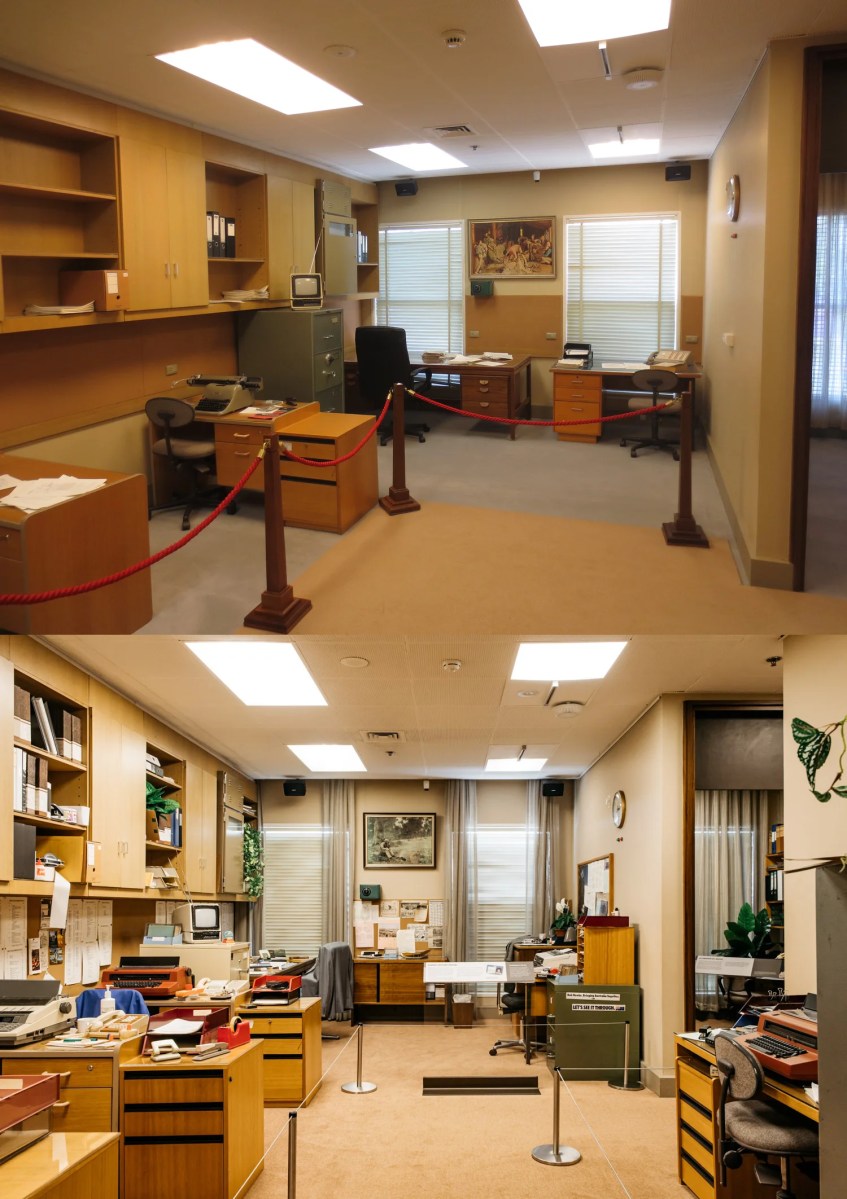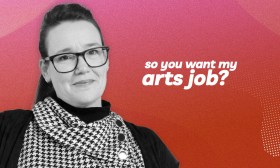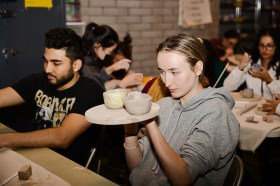Many may be familiar with language interpretation, but in the museum context, there is also a role dedicated to the interpretation of historic material. As an Interpretation and Content Development Officer at the Museum of Australian Democracy (MoAD) at Old Parliament House in Canberra (Australia), it hasn’t always been easy for Alice McKenzie Ebbels to explain her profession.
One way is to think of interpretation as a method of understanding and recreating historically accurate sets, which means her role includes extensive research, community engagement, conducting interviews, hands-on vintage furniture hunting and more.
Ebbels draws upon her varied experience as a tour guide, collections manager and heritage interpreter to develop content (including short videos) that reveals the intangible values – the stories, tales and emotional connections of the historic building she works within.
Read more to find out the telltale sign that led Ebbels to historic interpretation, and the dynamically unpredictable nature of being on the job at the former home of Australia’s Federal Parliament.
In this article:
How would you describe what you do?
When I first described my new job to my grandma, I said that it was like being a historically accurate set dresser. I take a room in Old Parliament House and, like a movie set, make it look like it is still the 1930s or the 1960s or the 1980s, depending on which era we are focusing on.
At a broader level, my role is to create engaging content for museum and online visitors to help them understand the significant history of this building, and the pivotal events that occurred here.
Historic room re-creations is not the only way to engage with our on-site visitors. Much of my work is assisting other teams in their interpretation activities. Whether it is fact-checking social media posts or brainstorming school holiday activities, I provide background material and ensure that we have got the facts right.
How did you get started in your career?
So, I was the seven-year-old who understood in meticulous and arguably morbid detail how an Egyptian mummy was created. There was never any doubt that I would end up in a history-related field.
My first job in a museum after completing a degree in History and Museum Studies was in the front of house team at the National Museum of Australia. This included checking tickets, running tours and assisting visitors. This role was a great way to get to know a museum, how visitors interact with spaces and the common questions and problems.
These roles also teach you how to work with others and how to interact with the public, and often lead to opportunities to work with other teams when they need an extra pair of hands for a few weeks. This lets you to explore different roles in the museum and was how I found my first full-time role as a collections manager.
What’s an average day or week like?
There is certainly no “average” day or week in the heritage interpretation field. The tasks I tackle range from research and writing text panels to cleaning displays. When I am working on a large project, like the re-creation of the Clerk of the Senate’s Office, over half of my time will be devoted to that project including research, writing text panels, selecting photographs, interviewing people who remember what the office looked like in 1975 or visiting local op shops and vintage stores to find an elusive prop.
But the day-to-day tasks of keeping the museum looking good can’t be neglected. My week always includes a tour around the recreated spaces to check that nothing has been moved and cleaning the spaces. Keeping on top of the dust from the 1970s carpets is an ongoing challenge.
My favourite part of the week is when one of the front of house staff gets in touch with an obscure question from a visitor such as, ‘My gran worked here in the 1960s. Can you tell me anything about her work?’
What’s the most common misconception about your job in interpretation?
I don’t speak more than one language; I am not that kind of interpreter. While I do share a job title with the talented people who translate languages, my work is heritage interpretation – how a site changed over time and what happened in it. It is not a well understood profession in Australia. I still get a quizzical look when I say I work in the Interpretation team at Old Parliament House.
Another surprising misconception that we encounter is from visitors who believe that the recreated rooms were actually left that way by the parliamentarians, staffers and press when they moved to Australian Parliament House almost 40 years ago. An oft-repeated comment is, ‘It’s like they’ve just left for lunch!’ While this is a lovely compliment, I feel the re-creations are more interesting when you know the amount of research and work that has gone into making them look this way.

Tell us about recreating the Office of the Clerk of the Senate in 1975, what did you have to work with? Were there any challenges and/or surprises?
To really throw yourself into recreating an office in Old Parliament House, you need to become the best friend or nosy colleague of the person whose office you are recreating. The Clerk of the Senate in 1975 was James Odgers and, although he died in 1985, I feel that I know him really well through the amount of research that I have done about him, from how he put himself through night school by hustling snooker to how he preferred to stand rather than sit at his desk due to a bad back.
Odgers occupied the office from 1972 to 1979 but the room recreation is set for 1975 as next year will mark the 50th anniversary of one of the defining moments of Australian political history – the dismissal of the Whitlam Government. What Odgers called the most dramatic day of his career. To recreate his office I have consulted historical records such as building plans, photographs and Odgers’ published writings, and have spent countless hours listening to oral histories and interviewing his family and colleagues.
The greatest surprise has been the light fittings in the office. From at least the late 1950s until 1985 the Clerk’s office was lit by two lovely chandeliers. They were removed between 1986 and 1988 – the last two years that Parliament occupied the building – and were replaced with very pedestrian fluorescent lighting. We will remove and store these and fabricate replica chandeliers. This is the level of detail that I will go into to evoke the right atmosphere for the room. It is going to be great and I am convinced that Odgers would have been pleased.
If you were interviewing someone for your job, what skills and qualities would you look for?
To be a really good interpreter you need to be a detective. Whether it is staring at an old photograph of a room trying to work out if the chair in the photo is the same as the one in front of you or trying to work out why visitors keep asking about a particular architectural detail – a close eye for detail is vital.
Read: So you want my arts job: Theatre Critic
Another key skill is being willing to keep asking questions and to seek advice and assistance. To bring together a project of this sort, you need to draw on a massive range of skills, which one person could never hope to have – from plastering and painting and furniture conservation to copyright clearances and text editing. Asking for advice and being willing to see things from another point of view is critical.
What’s the biggest shift or development in your field at the moment?
One major development in the interpretation field is the greater value being placed on the community’s heritage assets. This greater awareness, and the value being placed on these assets, has prompted many councils and other regulatory bodies to insist on some level of interpretation as part of approving changes to heritage buildings and spaces.
This is why you may see a sign or artwork explaining the previous use of a warehouse that has been converted to a community centre or a panel in your local park explaining the history of the area. If you look for it, you will find interpretation everywhere.





